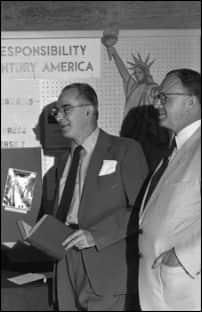Musings on law, technology, and privacy
By Kristopher A. Nelson
in
December 2013
500 words / 3 min.
Tweet
Share
I’ve been working on my dissertation for a few months now (it looks at American privacy law over some 150 years, and investigates how technology interacts with that law). Some of that work will emerge here in draft form eventually, but for now I’ve been thinking about the theoretical/critical framework for my work. Much of this framework will be implicit – since I’m writing a dissertation in history – but it will guide me nonetheless. It will develop throughout the writing process, but here are some initial thoughts.

Please note that this post is from 2013. Evaluate with care and in light of later events.
I’ve been working on my dissertation for a few months now (it looks at American privacy law over some 150 years, and investigates how technology interacts with that law). Some of that work will emerge here in draft form eventually, but for now I’ve been thinking about the theoretical/critical framework for my work. Much of this framework will be implicit — since I’m writing a dissertation in history — but it will guide me nonetheless. It will develop throughout the writing process, but here are some initial thoughts.
On technology and law
Technology and law are mutually constitutive. They each enable the other. Technology does not determine the future — or the law that will govern it — but neither does law determine the shape or direction of technology. But changes in technology will change the law; changes to the law will affect technology. But these changes are never determined or fully predictable.
For example, the boom in newspaper gossip columns, and especially the accompanying photography, drove Samuel Warren and Louis Brandeis to change the direction of privacy law in the United States in 1890. But similar conditions — technological and legal — existed in England at the same time, and yet British law took another path, staying with the relationship-focused law of confidentiality rather than moving to a focus on an individual’s “inviolate personality.” Technology in both cases produced the necessity of legal change, but failed to determine its form.
On privacy
The social conception of privacy varies across time and cultures — and technology has influenced that conception. And it is not just since the Industrial Revolution that technology has intruded — although the pace of change in the last 150 years has certainly outpaced the change over the last 15,000. Settlement and house-building impacted the idea of privacy, as did urbanization and population growth. But privacy, as with other social constructions like marriage, family structure, and so on, varies across not just time but also place. Technology is far from the only variable at play, but technology has consistently forced societies to question what privacy means, what it should look like, and what its value is.
I make little attempt to define exactly what privacy is; rather I focus on whatever law and society seems to treat as if it were related to privacy.
But I will say that privacy seems to consist of at least two different, but related, strands, at least within the American legal context: privacy-as-liberty and informational secrecy. The former led to decisions like Griswold v. Connecticut and Roe v. Wade, while the latter led to HIPAA, for example, and wiretap cases like Katz v. United States (a case that illustrates the relationship between liberty and information privacy).
These are some of the beginning analytical points of my investigation, and will continue to influence the direction of my historical work and my historical narrative.
Relevant cases
- katz v. united states, 389 u.s. 347 (1967)
- roe v. wade, 410 u.s. 113 (1973)
- griswold v. connecticut, 381 u.s. 479 (1965)
- charles katz v. united states, 386 u.s. 954 (1967)